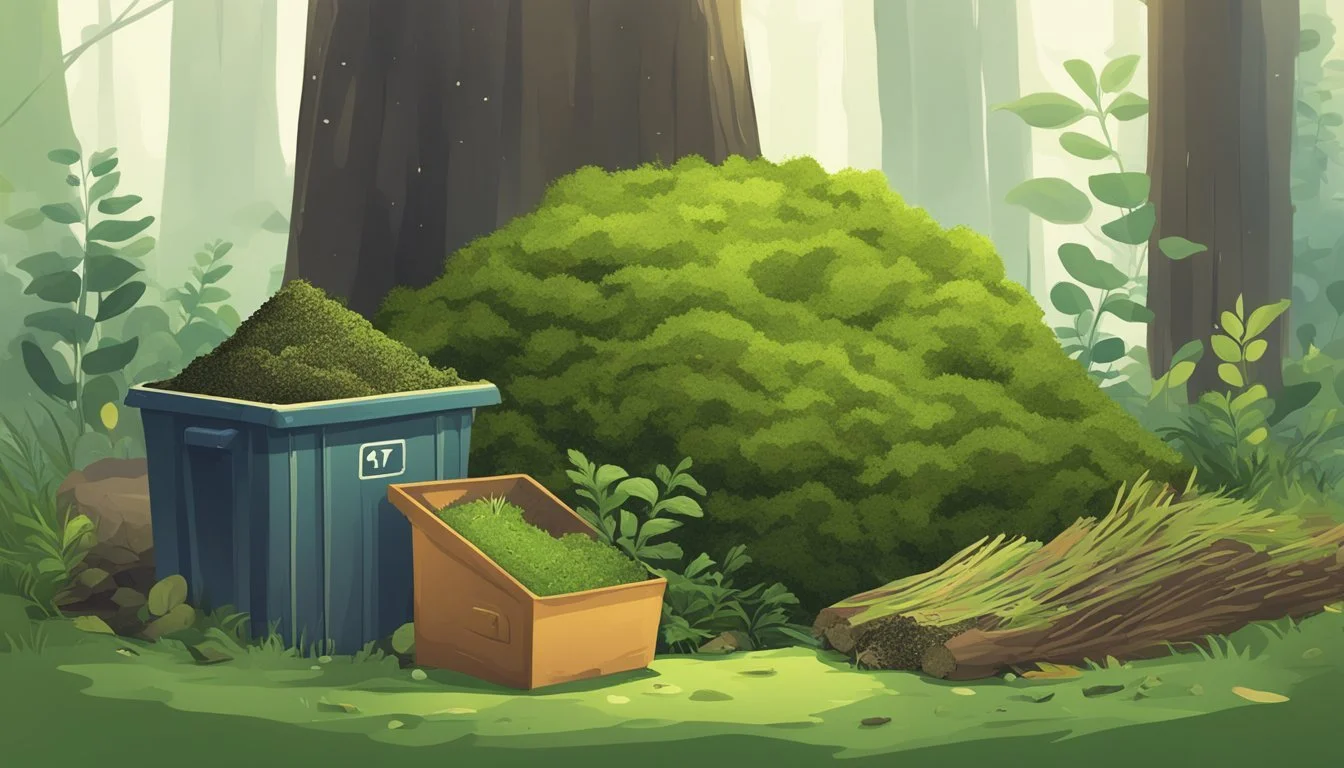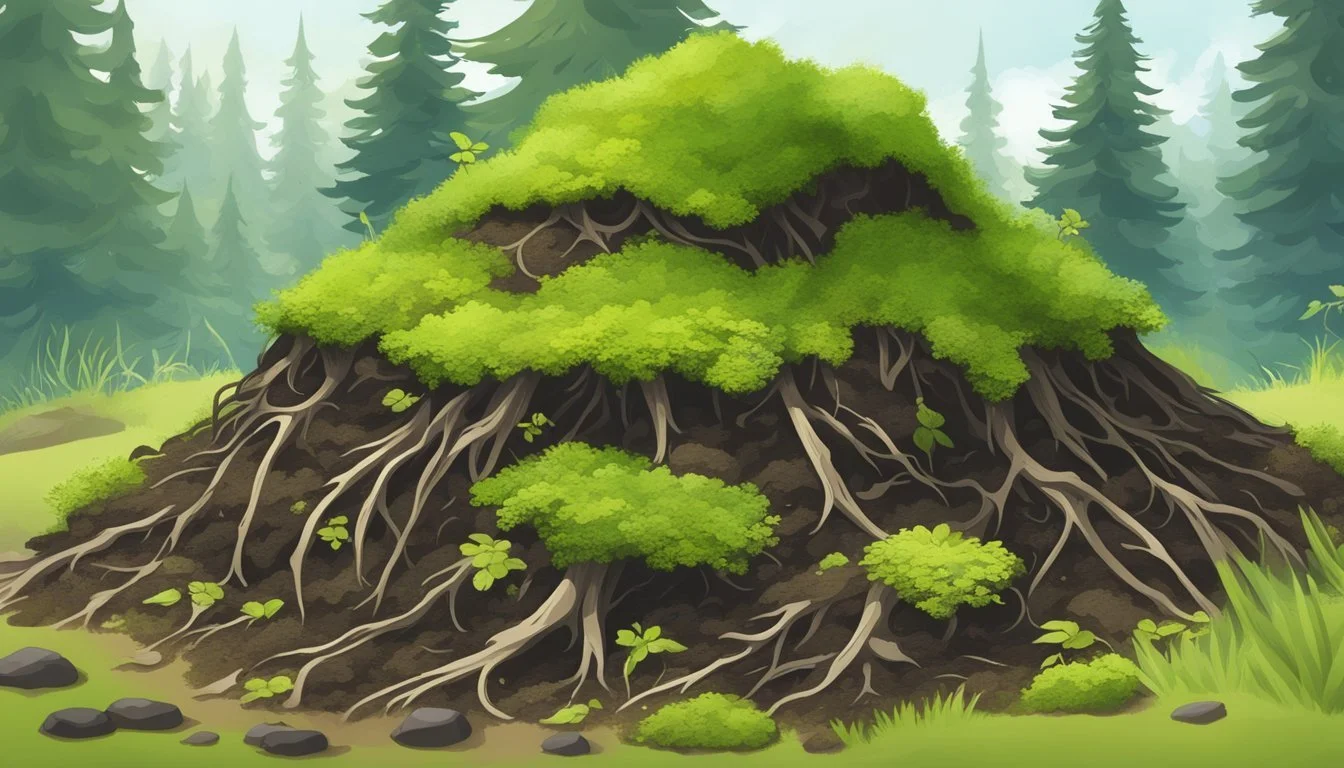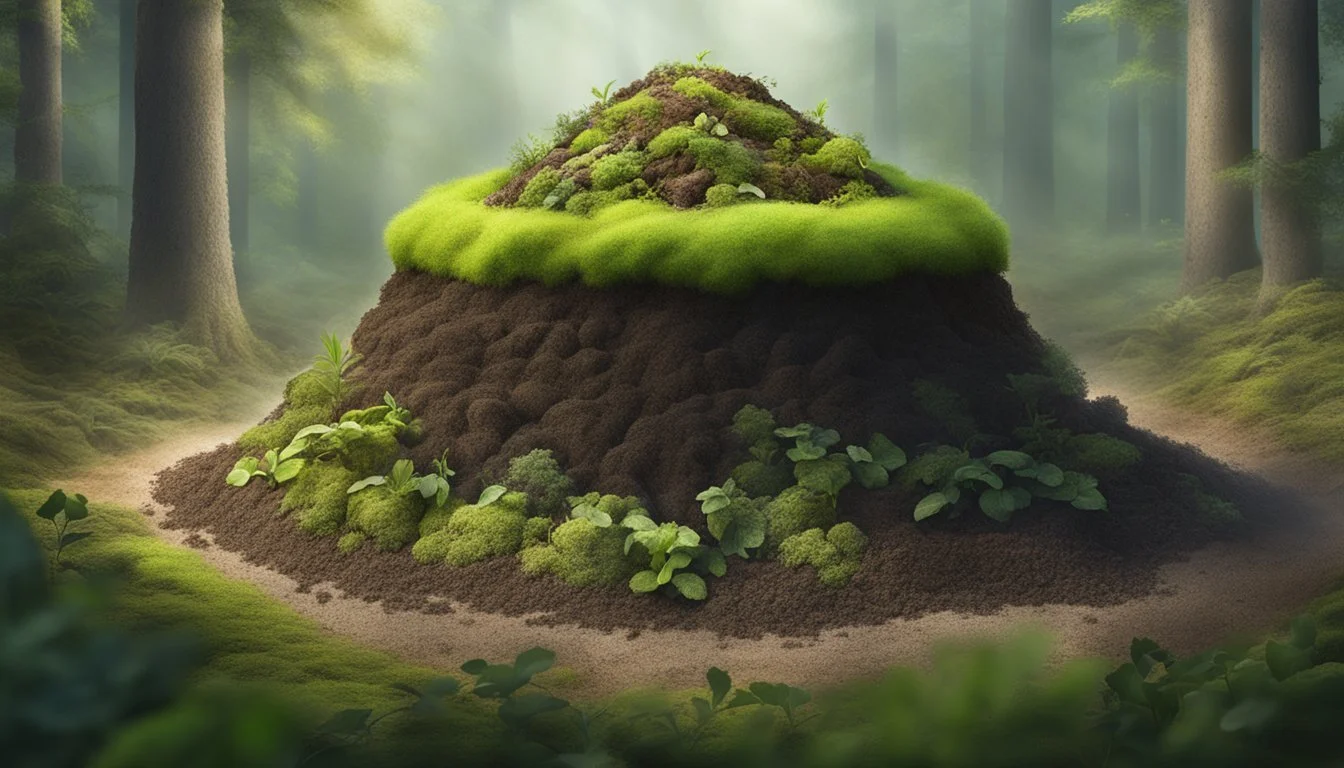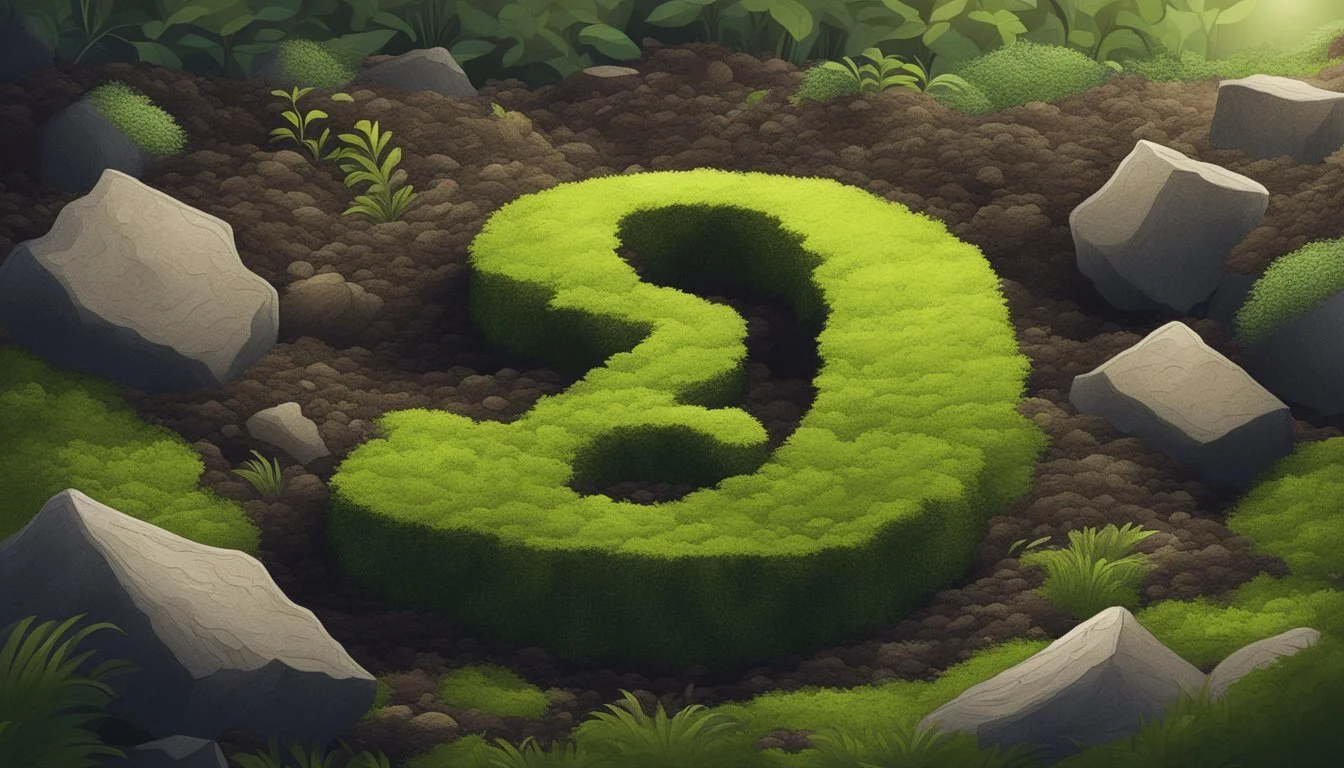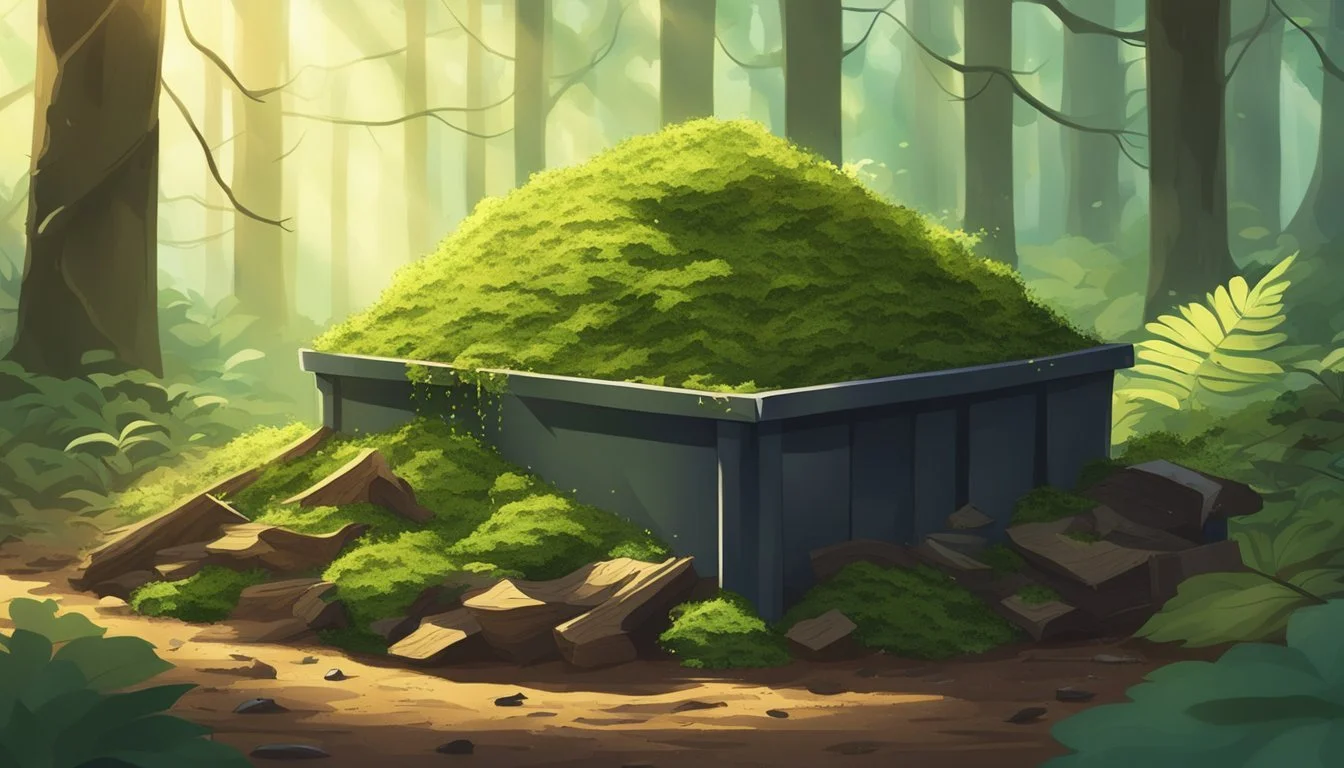Can You Compost Moss?
Unveiling the Myths and Facts
Moss is a type of plant that grows in dense green clumps or mats, often in damp or shady locations. It's a common occurrence in gardens, where it can be seen on the soil, trees, and rocks. While some gardeners may regard moss as a nuisance, it actually has the potential to be a beneficial addition to compost. Composting moss is a practice that can contribute to a sustainable garden ecosystem by recycling organic matter and enhancing the nutrient content of the soil.
When moss is added to compost, it breaks down over time, enriching the compost with nitrogen and other nutrients. This decomposition process contributes to the creation of a nutrient-rich additive that can greatly benefit garden soil. Gardening enthusiasts can engage moss as a sustainable resource, transforming what might be considered garden waste into a valuable component for soil health. By integrating moss into compost, gardeners can improve soil structure, promote moisture retention, and support the growth of healthy plants.
Understanding Moss
Mosses are an integral part of the ecosystem, known for their moisture retention abilities and contribution to soil structure. They play a pivotal role as organic matter that can influence soil aeration and are considered valuable green material in composting contexts.
Types of Moss
Two common types of moss that are often the subject of composting discussions include Sphagnum moss and Peat moss.
Sphagnum Moss: This type is known for its impressive moisture retention capabilities and is commonly used in the horticultural industry. It can absorb water up to 20 times its dry weight.
Peat Moss: This variety, formed from decomposed sphagnum moss, is often found in peat bogs and is prized for its use in improving soil structure and aeration.
These types illustrate the diversity within the moss family and their distinct characteristics that benefit soil and compost piles.
Moss Characteristics
Lignin Content and Moisture: Mosses generally have low lignin content compared to woody plants, which impacts their decomposition rate. They tend to hold moisture exceptionally well, a pertinent characteristic for composting as moisture is crucial for the composting process.
Organic Matter: Moss is comprised mainly of organic matter, which decomposes into nutrients that are beneficial to soil health.
Soil Aeration: When added to compost, moss can help to create air pockets, thereby enhancing soil aeration, which is essential for healthy root development.
In summary, mosses with their unique abilities to retain moisture and their structure as organic matter, significantly contribute to the formulation of nutrient-rich compost and optimization of soil conditions.
Composting Basics
Composting is an eco-friendly process that turns organic matter into a nutrient-rich soil additive. Proper aeration, moisture, and temperature control are pivotal for successful decomposition.
What is Composting
Composting is the controlled breakdown of organic material. This natural process is driven by microorganisms, which convert items like food scraps, leaves, and grass clippings into compost. The resulting material, rich in nutrients, is beneficial for gardens. A compost bin or compost pile acts as the site for this transformation.
The Role of Aeration
Aeration is crucial in the composting process as it supplies air to microorganisms that break down organic material. An oxygen-rich environment accelerates decomposition and prevents unpleasant odors. Gardeners can enhance aeration by turning their compost mix regularly, ensuring that air reaches all parts of the compost pile.
Moisture and Temperature Control
For optimal composting, maintaining the right moisture levels is essential. A compost pile should be moist but not waterlogged, resembling a well-wrung sponge. Temperature also plays a significant role; a "hot compost" process, where the pile's core heats up, is faster, especially in summer. During winter, insulating the pile retains heat, aiding in the continuation of decomposition.
Benefits of Composting Moss
Composting moss offers tangible advantages for both soil health and environmental sustainability. By transforming moss into a beneficial compost additive, gardeners can enhance soil structure and contribute to waste reduction.
Soil Amendment Properties
Moss compost brings several soil amendment benefits. When added to garden soils, it can significantly improve soil structure by increasing its ability to retain moisture and air, which are crucial for healthy root development. The nutrient-rich compost that results from decomposed moss acts as a natural fertilizer, supplying essential nutrients to the soil. This natural amendment process gradually boosts soil fertility and fosters overall soil health, offering plants a rich and supportive growing environment.
Environmental Impact
The environmental advantages of composting moss are notable. It provides a method of recycling garden waste, thus reducing waste that would otherwise contribute to landfill issues. Furthermore, by composting moss from one's own garden or responsibly sourced locations, the dependency on peat bogs—a non-renewable resource often used in horticulture—diminishes. This practice supports erosion control and preserves vital habitats, reinforcing the sustainability of gardening activities.
How to Compost Moss
Composting moss is a way to recycle this garden material into nutrient-rich soil enhancer. A gardener should attempt to balance moisture and carbon-nitrogen ratios, prepare the moss by scarifying or shredding to break the tough lignin, and implement layering techniques for optimal decomposition.
Preparing Moss for Composting
The initial step involves scarification or shredding the moss to facilitate quicker breakdown. Since moss has a high lignin content, it resists decomposition. Shredding it into small pieces exposes more surface area to decomposing agents within the compost pile.
Steps for Preparing Moss:
Gather moss from the garden.
Use gloves to protect your hands while handling.
If the moss is dry, moisten it slightly to aid the shredding process.
Scarify the moss using a rake or similar tool to break it up or shred it with a garden shredder.
Ensure the prepared moss is not compacted to allow for airflow within the compost.
Layering Techniques
In a compost pile, layering is essential to balance moisture, nitrogen, and carbon. Moss, typically acting as a green material, is higher in nitrogen. It should be layered with brown material like dried leaves, straw, or wood chips to achieve the ideal carbon-nitrogen ratio.
Layering Example:
Bottom Layer (Brown material): Provides aeration and drainage.
Middle Layer (Green material, including prepared moss): Supplies nitrogen.
Top Layer (Brown material): Balances compost and absorbs excess moisture.
Apply water between layers to maintain adequate moisture levels, crucial for the composting process. Yet, beware of overwatering, as this can lead to an anaerobic environment detrimental to the composting process. The layers encourage diverse microbial activity, which accelerates decomposition and prevents the compost pile from becoming compacted, fostering effective breakdown of materials.
Optimizing the Compost Pile
An effective compost pile requires a precise balance of nitrogen and carbon materials and an environment conducive to microbial activity. By adjusting these two factors, one can enhance the composting process.
Balancing Nitrogen and Carbon
For a compost pile to decompose organic matter efficiently, the ratio of carbon-to-nitrogen (C) must be optimized. The ideal C ratio is about 30:1, meaning 30 parts carbon to 1 part nitrogen. Nitrogen is provided by green materials such as grass clippings and kitchen scraps. Carbon comes from brown materials, like dried leaves and cardboard.
Green materials (Nitrogen-rich):
Grass clippings
Kitchen scraps
Garden waste
Brown materials (Carbon-rich):
Dry leaves
Straw or hay
Woody prunings
Paper
Frequency of turning and mixing the pile can directly impact the efficiency of the composting process, helping distribute these elements evenly.
Maximizing Decomposition
The decomposition rate in a compost pile is influenced by microorganisms, which require a well-managed environment to work effectively. The following factors are crucial for maximizing the composting process:
Aeration: Introducing air into the pile is essential for aerobic bacteria. Turning the pile regularly ensures sufficient oxygen flow.
Temperature: The pile needs to maintain an internal temperature between 135°F and 160°F. This range supports microbial activity and encourages rapid decomposition.
Moisture: The pile should be kept as wet as a wrung-out sponge to sustain microbial life. Too much or too little water can slow down the process.
By diligently managing these aspects, microorganisms will thrive and break down compostable materials, including moss, efficiently.
Common Issues and Solutions
Composting moss presents unique challenges related to pests and moisture regulation. Addressing these issues ensures a healthy compost pile conducive to decomposition.
Dealing With Pests
Pests such as slugs, snails, and insects may be attracted to the unique environment moss creates in a compost pile, due to its dense structure and moisture retention. To combat pest issues, gardeners should:
Inspect: Regularly check the compost for pests and manually remove them.
Balance: Maintain a diverse and balanced compost mix to discourage pest colonization. This involves adding a mixture of green and brown materials.
Aerate: Turn the compost frequently to disrupt pest breeding and improve air circulation.
Tables cannot adequately express this information due to its instructional nature.
Maintaining Proper Moisture
Moisture is critical for composting moss, as both overly wet and too dry conditions can hinder the decomposition process. Strategies to maintain optimal moisture levels include:
Drainage: Ensure the compost bin has good drainage to prevent waterlogging, which can create anaerobic conditions detrimental to compost health.
Covering: During rainy periods, cover the compost pile to manage excess water intake.
Turning: Regularly turn the pile to distribute moisture evenly and incorporate air into the system.
These targeted actions help sustain the right moisture and air balance within the compost, facilitating the breakdown of moss and other organic materials.
Using Moss Compost in Gardening
As gardeners strive for sustainable methods to enrich their gardens, composted moss presents a valuable amendment. It enhances soil quality and supports plant growth with its nutrient content.
Enhancing Soil Quality
Moss compost is teeming with essential nutrients that improve soil quality. It aids in adjusting soil structure and increases aeration, essential for healthy root systems. Composted moss can improve soil texture, making it more friable and conducive to retaining moisture, especially beneficial during the spring growing season.
Supporting Plant Growth
Composted moss contains nitrogen, an essential nutrient for plant growth, acting as a slow-release fertilizer. This compost also helps in maintaining consistent moisture levels, providing an optimized growth environment. Its application can diminish the need for synthetic fertilizers, thereby promoting more organic growth practices.
Alternative Uses for Composted Moss
Beyond use as a fertilizer, composted moss can serve as a protective mulch. It retains moisture in soil, reduces weed growth, and insulates roots from extreme temperatures. However, gardeners should be aware of the potential for moss spores present in the compost to grow, particularly in shaded areas receiving ample sunlight. It's crucial to monitor these conditions to prevent unwanted moss proliferation.
Final Considerations
In the realm of composting, incorporating moss comes with its caveats and rewards. Gardeners seeking both sustainability and efficiency in their organic recycling practices will find these final considerations pivotal in utilizing moss to its fullest potential.
Choosing the Right Moss
Gardeners should identify the type of moss they are dealing with before composting. Sphagnum moss, typically found in boggy areas, is coveted for its ability to retain water and is often used in gardening. However, because of its resilient nature, it may take longer to decompose. Conversely, peat moss—while also having a slow decomposition rate—has been widely discouraged due to its environmental impact and the role it plays in carbon sequestration in its natural habitat.
Best Practices for Sustainability
Sustainable composting with moss involves several best practices:
Reducing Waste: Adding moss to a compost heap is a commendable step in recycling garden waste, transforming it into beneficial organic matter for future gardening projects.
Mixing and Aeration: Moss should be mixed with other green and brown compost materials to balance the nitrogen content and enhance decomposition. Aeration helps by facilitating microbial activity.
Backyard Integration: Utilizing moss in backyard compost bins may improve soil quality over time, lending better structure and moisture-retention properties to garden soil.
Composting moss can be a practical addition to gardeners' efforts in creating rich, organic matter, provided the process is approached with an understanding of moss’s unique properties.
Additional Resources
This section provides readers with trusted materials and community forums for a deeper understanding of moss in the composting process and its use in gardening as an organic material.
Further Reading
"Composting Basics" by Anne Miller: This book offers a comprehensive look at composting, including how to integrate moss into your compost pile.
"The Gardener's Guide to Compost" by Emily Murphy: It features a chapter dedicated to unusual compost materials, covering moss as an organic addition to the garden.
Community Support
Gardeners' Corner Forum: A platform where gardening enthusiasts discuss various composting techniques, including the ins and outs of composting moss.
Compost Enthusiasts Group on Facebook: Members often share experiences and advice on composting a wide array of organic materials, such as moss.


